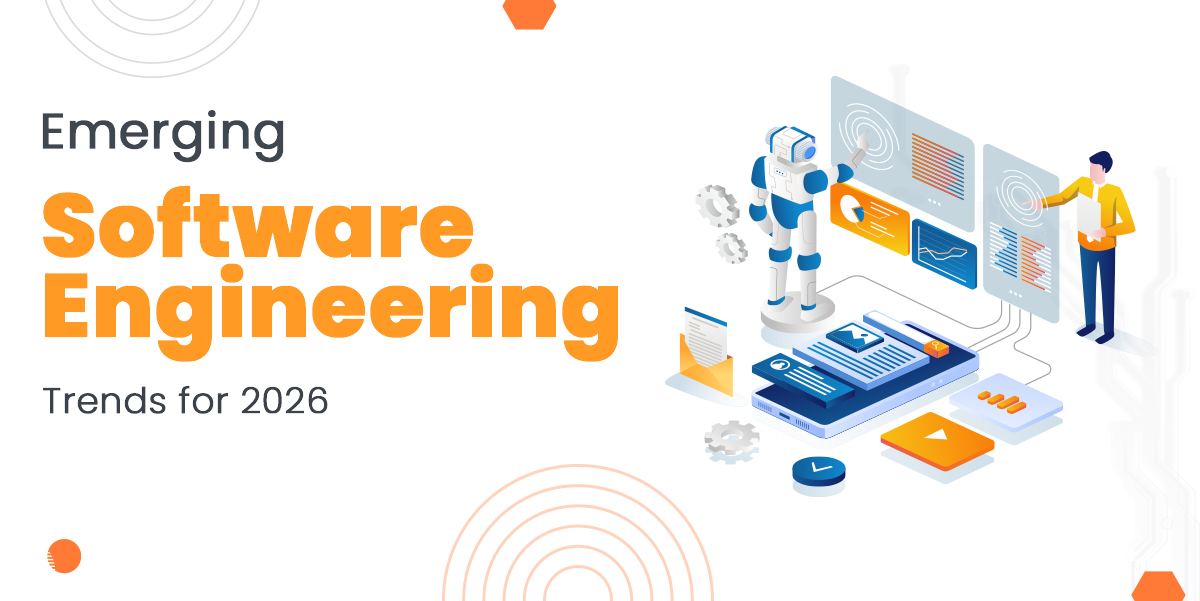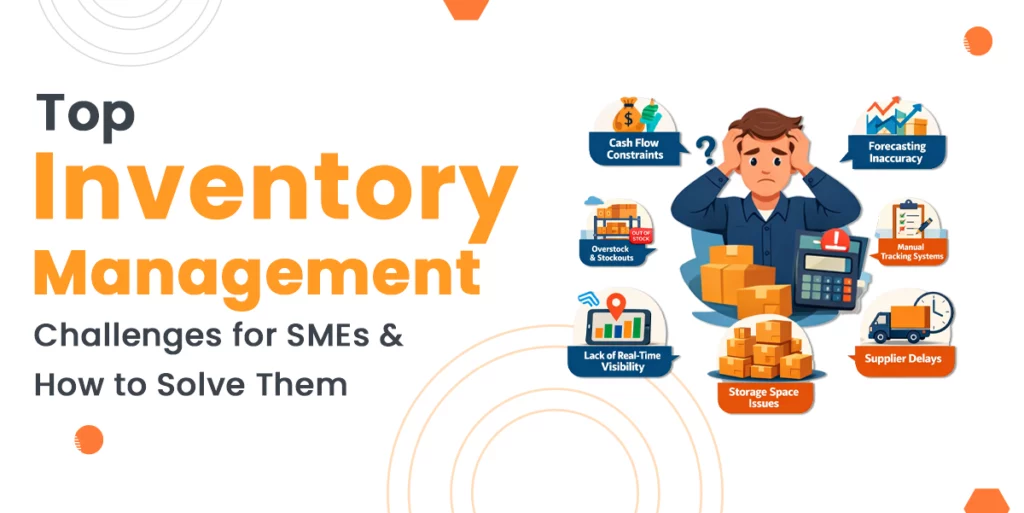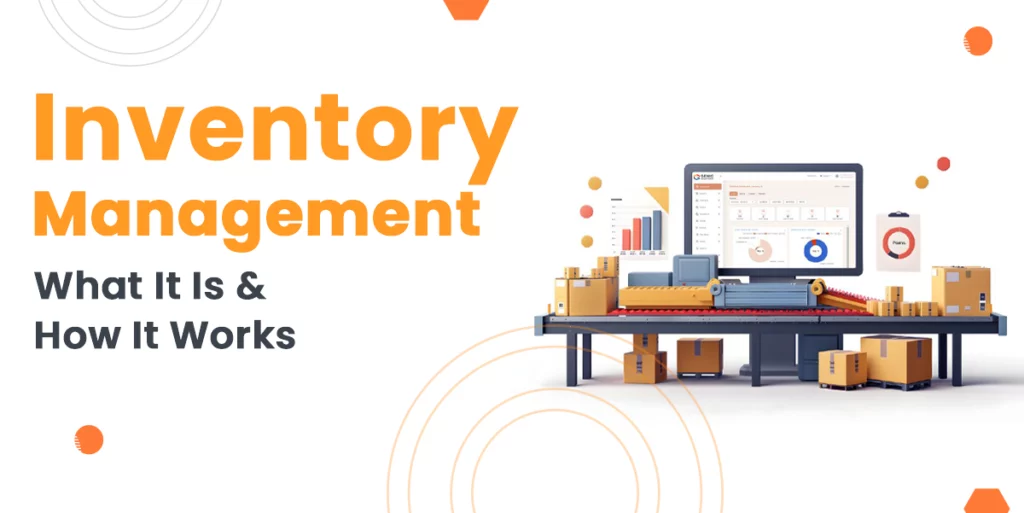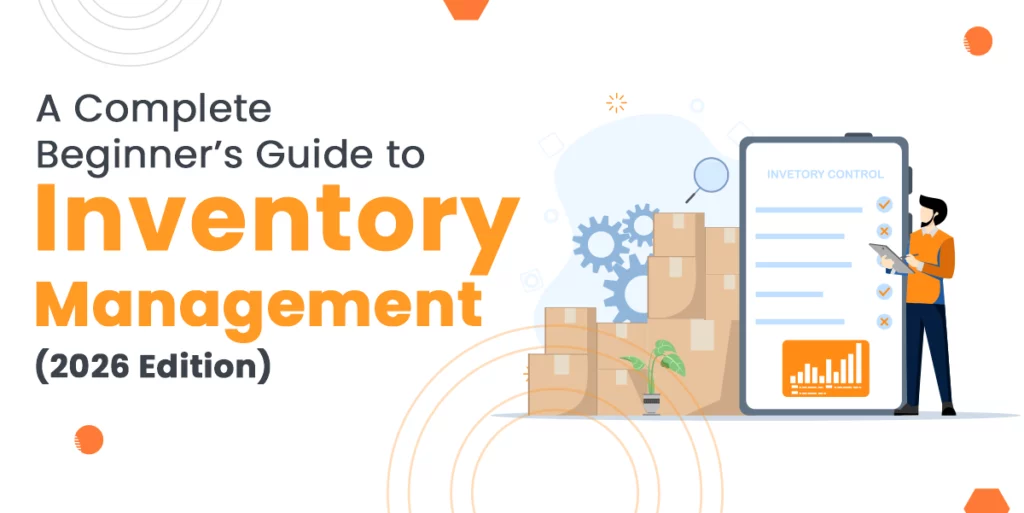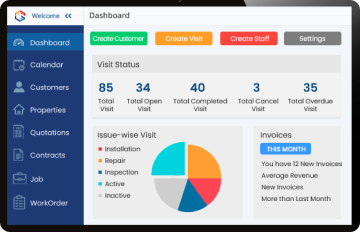The world of software development is transforming faster than ever, powered by technologies like AI, blockchain, and edge computing. As we approach 2026, development teams and businesses must keep up with massive shifts in how software is designed, built, and maintained.
These changes aren’t just about speed—they impact security, scalability, user experience, and even sustainability. From AI-driven software development practices to low-code/no-code platforms, this blog explores the most critical trends shaping the future of software development.
Whether you’re leading innovation at a startup or managing enterprise software in a global company, understanding these software development trends will help you make smarter tech decisions. Dive in to discover where the industry is heading and how to stay ahead of the curve in 2026 and beyond.
1. AI-Powered Development Tools
In 2026, AI-assisted development tools like GitHub Copilot, Claude, and Cursor are revolutionising the way code is written. These tools now do more than autocomplete as they identify bugs, refactor legacy code, and generate test cases.
This evolution marks a turning point in software development trends, where AI acts as a partner rather than just an assistant.
With Cursor surpassing $500M ARR, we’re seeing real traction in AI-enabled platforms. As the Emerging Software Development Trends for 2026 take shape, expect AI-driven engineering to be a baseline, not a bonus.
For companies engaged in software development in Singapore and globally, integrating AI tools into the workflow is becoming essential for scaling innovation while maintaining speed and quality.
2. Rise of Low-Code/No-Code for Enterprise and AI Projects
Low-code and no-code platforms are evolving from internal-use tools to essential infrastructure for enterprises. In 2026, platforms like Bubble, Adalo, and Microsoft Power Platform are leading a revolution in custom software development.
These platforms now support AI workflows, enterprise-grade architecture, and omnichannel UX. With 80% of enterprise software is predicted to rely on low-code/no-code frameworks. Businesses are building things faster without losing control.
This aligns with the broader low-code and no-code development trends, where teams without deep coding expertise can still contribute to scalable, intelligent solutions. As businesses undergo digital transformation, these platforms democratize development and accelerate time to market.
3. DevSecOps Becomes a Default Mindset
Security is now built into every stage of the modern development lifecycle strategies. The future of software development uses DevSecOps by adding security from the start to the end. With more frequent release cycles and rising threats, developers are expected to implement security testing in real time.
Tools powered by GitLab, for instance, help teams deploy code 46x times faster and cut problem costs by over 50%. This shows that in 2026, agile and DevOps now work together as one strong approach.
For companies building mission-critical platforms, DevSecOps is the foundation of secure, scalable innovation.
4. Cloud-Native Engineering Goes Serverless and Modular
In a world of digital transformation, cloud-native building moves into a bold new stage. In 2026, more organisations are getting into serverless tools, event-driven plans and microservices 2.0.
Developers now build apps that save money and grow quickly. Tools like AWS Lambda, Kubernetes, and Terraform speed up this work. This approach fits with modern software development lifecycle strategies, where smart actions mix agility and automation.
As FinOps grows stronger, teams also optimise their setups to save money not just time. Whether you lead a startup or a big firm, using this modular, cloud-first mindset helps your apps bend and bounce back as fast as the markets shift.
5. Blockchain-Backed Software Systems
Blockchain is evolving far beyond cryptocurrency. In 2026, it will power secure identity management, software licensing, and decentralised healthcare records. Enterprise use of smart contracts is increasing, particularly in logistics and finance.
As part of broader technology trends in 2026, companies are recognising blockchain as one of the top software engineering innovations, with Deloitte reporting that 73% of executives believe it provides a strategic edge.
Tools like Hyperledger and Polygon are powering robust, transparent ecosystems. For companies focused on building trust, transparency, and tamper-proof data sharing, blockchain is no longer emerging but it’s essential.
6. Edge Computing Joins the Mainstream
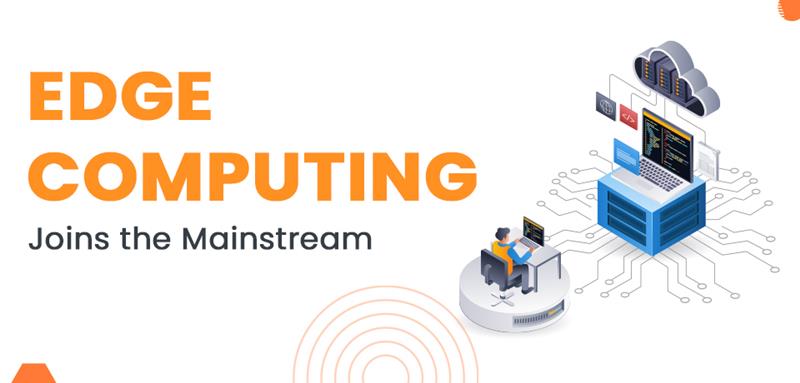
More and more smart machines (IoT devices) are now reaching 65 billion. So, software development moves closer to where those machines live, and this is called edge computing. In 2026, this will help games, cars, and smart industries work super fast.
Developers create apps that work in real time, even when there’s no internet. Tools like Azure IoT and AWS Greengrass speed up this process. Choosing the Best programming languages for software development in 2026 like Rust (for safety) and C++ (for power), helps developers build strong apps.
This smart setup boosts speed and keeps systems steady. It also helps people follow rules in places like hospitals and banks. Edge computing isn’t new anymore but it leads the way forward now.
7. AI-Powered Continuous Delivery
In Software development in Singapore and everywhere else, smart tools help developers build and send out new updates fast. In 2026, developers trust AI to test code, spot bugs, and undo problems.
Tools like ArgoCD and LaunchDarkly let teams send out lots of updates each day without breaking things. These tools show how much we now lean on AI-driven software development practices where smart machines and people team up.
By integrating automation and brainpower, developers in 2026 cut down stress and speed up their work. This is how they keep up with the super-fast world of today’s tech.
8. PWAs Become the Preferred Choice for Seamless App Experience
Progressive Web Apps (PWAs) now shine in mobile tech. In 2026, they work fast, use less space, and even run without the internet. Starbucks switched to PWAs and saw big results as its app got 99% smaller in size and more people used it.
As part of sustainable software development methodologies, PWAs save energy and use less data, which is great for the planet. They also help teams save money and time because one app fits all devices.
Now that we all care more about Earth, PWAs offer a smart and easy way to build apps especially since phones, tablets, and laptops now work well with them.
9. Quantum Computing Starts to Shape Specialised Development
While not mainstream (yet), quantum computing is no longer just a research field. In 2026, quantum programming is emerging as a specialised branch of , particularly for:
- Optimisation problems (e.g., logistics, supply chains)
- Pharmaceutical simulations
- Quantum-safe cryptography in cybersecurity
Notable Moves in 2025–2026:
- IBM Qiskit and Microsoft’s Azure Quantum make it easier for developers to simulate quantum circuits using classical machines.
- Google’s Sycamore processor crossed the 100-qubit milestone, inching closer to practical advantage.
- Financial institutions are testing quantum risk analysis platforms.
Early-stage developers in quantum now resemble the AI pioneers of a decade ago. By 2030, having a team with quantum-aware coders may become a differentiator in finance, security, and high-performance computing.
10. Sustainable Software Engineering Gains Corporate Backing
With rising pressure on tech companies to reduce their carbon footprint, sustainable software engineering (SSE) is now a strategic imperative in 2026.
What it means:
- Writing energy-efficient code
- Choosing greener cloud providers
- Measuring the carbon impact of computing resources
Tools & Practices:
- Green Software Foundation (backed by Microsoft, Accenture, GitHub) is publishing frameworks and certifications.
- Carbon-aware SDKs allow software to reduce workloads during high-emission energy hours.
- Cloud providers like AWS (Graviton) and Google Cloud (Carbon Footprint tool) help teams make greener deployment choices.
According to a 2024 report by The Shift Project found that software accounts for over 3% of global emissions is more than the airline industry.
Expect sustainability to become a key KPI in product development, especially for public companies facing ESG scrutiny.
Future Outlook
As we look toward 2026 and beyond, the road ahead for software development will be defined by smarter tools, stronger ethics, and global opportunities. Let’s explore what the future holds.
Balancing Innovation and Responsibility
The future of software development will be shaped by how well organisations merge innovation with accountability. Technologies like AI, blockchain, and edge computing are no longer optional as they’re foundational to staying competitive.
Evolving Agile and DevOps
In 2026, agile and DevOps will become more closely integrated and form hybrid models which focus on real-time feedback, automation, and ongoing improvement in software development.
Sustainability and Governance as Core Priorities
Sustainability and AI ethics will shift from buzzwords to performance metrics. As part of global digital transformation, developers must embed sustainable practices and responsible AI design into every project.
Regional Growth and Opportunity
Markets like Software development are uniquely positioned to lead, thanks to strong investments in tech infrastructure and talent.
Conclusion
The domain of software development in 2026 is being shaped by major technologies like AI, automation, cybersecurity, sustainability, and modular architecture.
These aren’t just trendy words but they represent real, actionable changes that businesses must adopt to stay relevant and competitive. As you’ve read, trends like low-code/no-code development, DevSecOps, quantum computing, and edge technology are setting new benchmarks for innovation.
By understanding and acting on these emerging software development trends, organisations can unlock faster delivery cycles, improve operational efficiency, and build future-ready platforms. For tech-driven markets like Singapore, these innovations offer an edge in regional and global competitiveness.
Now is the time to assess your systems, explore new tools, and realign your strategy with where the industry is headed.
At Genic Solutions, we help businesses build future-ready digital systems tailored to meet tomorrow’s challenges. Our team delivers innovative, reliable solutions that scale with your growth.

